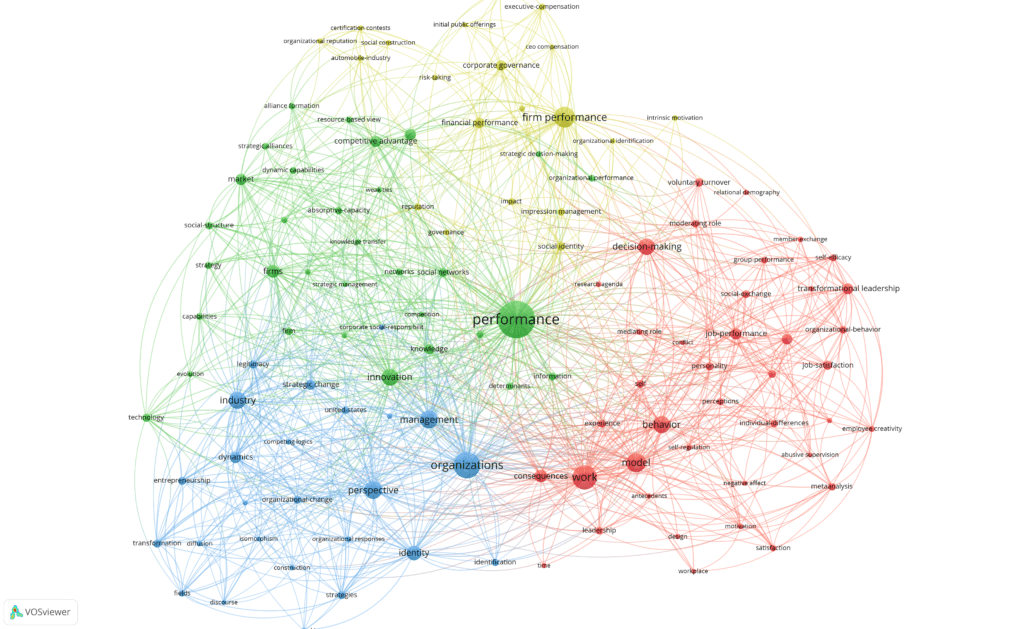Bibliometrics is the statistical analysis of written publications, based on content and / or metadata. Although bibliometric methods are often applied to evaluate institutions scholarly impact, it can also be applied differently and offer insights to topics of more interest to the individual researcher, both in terms of getting an overview of a body or research, and as the basis for scientific publications.
One example of a quick analysis is a visual graph of the most frequently used keywords and structure of topics in “The Academy Management Journal” in the past decade.
The workshop is developed by Njål Andersen, and has been held both at Oslo Metropolitan University and BI Norwegian Business School; and refined based on participant feedback. For longer workshops, experts of specific topics are brought in.
The workshop is divided into three parts.
Part 1: Practical applications of bibliometrics for academics
This session covers some quick and simple analysis that can offer interesting insights, such as
- Detailed citation analysis
- Visualize author networks, both individuals and in a field of research
- Identify key journals for a topic
- Evaluate journal fit for a manuscript
- Visualize the topical structure of a field
- See temporal characteristics in a field
- Find related articles to ones you already know
- … and more.
Part 2: Possible analysis and configurations for a bibliometric study for publication
- Constructing a search term (Using an Excel template developed for the workshop for efficiency and documentation)
- Social network analysis, a primer for metrics used in bibliometrics
- How to identify the topical structure of a research area, (Co-Occurrence analysis)
- What is the theoretical foundation of a field of study (Co-citation analysis)
- Identify past or current research fronts / trends (Bibliometric coupling)
- More advanced analysis
- Model for network evolution
Part 3: Group work and idea generation
Self divide into groups, based on type of analysis that appeals to you
- Identify interesting questions to answer
- Discuss what components to include in a paper
- Brainstorm how to lift it with new approaches
- Conduct data collection and analysis
The duration of the workshop varies from half a day, to four days, depending on level of detail and participant application. In four days, participants are expected to have completed analysis necessary for a publication (though significantly more time will have to be invested for reading and writing the final article).
Workshop material:
I find it useful to create a search in Excel, and this is the template I use.
Search for articles with Excel for Web

